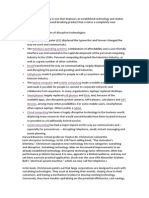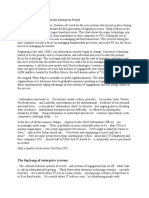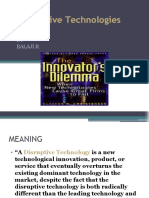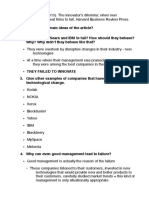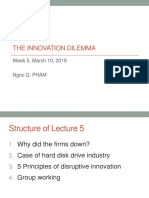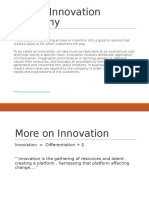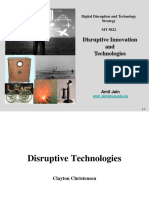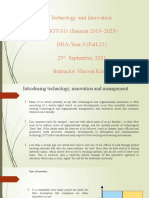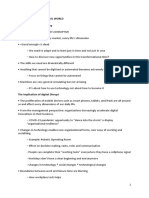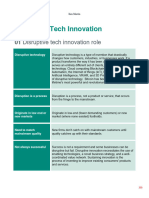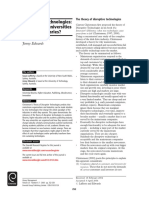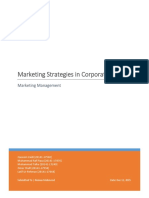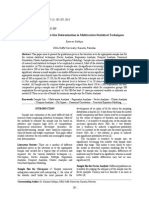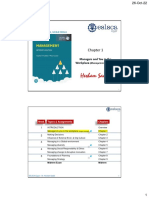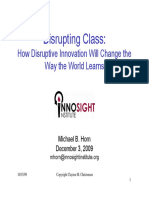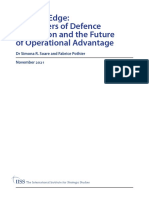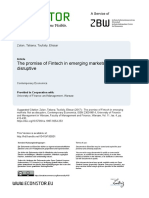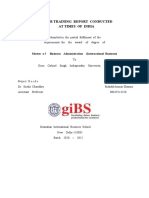MSEO
Class 8
�Notes nyah, nyah, nyah
Notes
of no use
are
unless you
read, study and make notes of your own. If
you depend on these slides to pass, then
forget it. You have already failed. See you
next semester.
�Collective genius
No longer casting themselves as solo visionaries,
smart leaders are rewriting the rules of
innovation
�The idea - challenge
Competitiveness depends in great part on the ability to innovate.
QUESTION:
How to build an organization capable of innovating continuously?
�The Idea - key
Moving away from traditional leadership roles, the new role of a leader of
innovation is
NOT to set a vision and motivate others to follow it.
IT IS to create a community that is willing and able to innovate
�The Idea - Approach
Foster willingness to create communities that have sense of purpose, shared
purpose, rules of engagement that encourage collaborative, discovery driven
innovation & integrative decision making
But if you want to foster ability you to create:
1.
Creative abrasion
2.
Creative agility
3.
Creative resolution
�So what is
Big Bang Disruption?
�Traditional disruption
Disruptive technologies such as the Internet among others started out small,
simple and cheap until they challenged incumbents
Disruptive technologies changed the rules of the game, they changed created
fundamental changes to the way business was to be done. The brick and
mortar store gave way to the internet based store, basically the same
difference
The early trial users was a reasonably large mass to enable market players to
spot the next new thing from a distance and prepare to meet the challenge
�Disruptive innovation
This is a term of art coined and phenomenon analyzed
by Clayton Christensenn(1995).
It describes a process by which a product or service
takes root initially in simple applications at the
bottom of a market and then relentlessly moves up
market, eventually displacing established
competitors.
A disruptive innovation creates a new Paradigm a
wholly new way of doing business requiring new business models
�New but not disruptive
Not all innovations are disruptive, even if revolutionary.
The car was not a disruptive innovation, early cars were expensive items that
did not disrupt the market for horse drawn carriages.
In 1908 the market for transportation was disrupted by the mass-produced,
low priced car.
It changed the transportation market and created a whole new paradigm for
business
�Spoiling the party disruptive technology
�Examples of disruptive technologies:
The PC displaced the typewriter, changing the way we work and communicate.
The Windows operating system's was affordable and user-friendly leading to
development of PCs in the 1990s. Personal computing disrupted TV,
telecommunications, Materials management (MRP1, MRP2 became SCM)
Email transformed personal communication disrupting the postal/ greeting cards
Cell phones disrupted the telecom industry.
The laptop computer and mobile computing made a mobile workforce possible and
made it possible for people to connect to corporate networks and collaborate from
anywhere. In many organizations, laptops replaced desktops.
Smartphones largely replaced cell phones and PDAs and, because of the available
apps, also disrupted: pocket cameras, MP3 players, calculators and GPS devices.
Cloud computing has been a disruptive technology in the business world,
displacing many resources located in-house or a traditionally hosted services.
Social networking has disrupted the way we communicate and -- especially for
personal use -- disrupting telephone, email, instant messaging and event planning.
(http://whatis.techtarget.com/definition/disruptive-technology)
�But that was yesterday
Sing to the tune of Yesterday, all my troubles were so far away oh, I
believe in yes-ter-day.suddenly)
�Big Bang disruption
Big-bang
disruptions don't follow the usual pattern of
customer adoption.
These "big-bang" disruptions are often unplanned and unintentional. They do
not follow conventional strategic paths or normal patterns of market
adoption.
There is no warning when they strike, there is no time to adjust, nothing that
tells you that your company, technology, product or service is no longer
needed or wanted.
Nothing tells you that your market has disappeared in the twinkle of an eye
�How do you deal with BBD? (Big Bang
Disruption not BARBIE DOLLS)
These "big-bang" disruptions are often unplanned and unintentional. They do
not follow conventional strategic paths or normal patterns of market
adoption.
THINK free apps that make smart phone smarter than anyone expected. A
small innovation may be adopted by a handful of people and then:
BOOM!
Your market is gone
Thanks to the new Product Life cycle
�The NEW plc
The new product cycle can be simplified into 3 basic stages:
1.
development
2.
deployment,
3.
replacement.
The new plc is much faster, approximating the speed at which computing
power doubles, which, as Intel cofounder Gordon Moore famously predicted in
1965, happens every two years. We're now doubling an enormous amount of
power, which greatly accelerates the rate of disruption
and
�And their solution? LOL
Seemingly random experiments and crash-and burn flops may actually be
your best warning of an urgent need for a change in strategy, or "strategic
pivot:' It's like a battlefield, where near misses signal not that your enemies
are confused or incapable of hitting you but that they are zeroing in on your
position -walking their fire onto the target, shell by shell- before unloading a
full barrage on your exact location (find the page number yourselves, yup)


